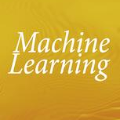Electromagnetic (EM) imaging is widely applied in sensing for security, biomedicine, geophysics, and various industries. It is an ill-posed inverse problem whose solution is usually computationally expensive. Machine learning (ML) techniques and especially deep learning (DL) show potential in fast and accurate imaging. However, the high performance of purely data-driven approaches relies on constructing a training set that is statistically consistent with practical scenarios, which is often not possible in EM imaging tasks. Consequently, generalizability becomes a major concern. On the other hand, physical principles underlie EM phenomena and provide baselines for current imaging techniques. To benefit from prior knowledge in big data and the theoretical constraint of physical laws, physics embedded ML methods for EM imaging have become the focus of a large body of recent work. This article surveys various schemes to incorporate physics in learning-based EM imaging. We first introduce background on EM imaging and basic formulations of the inverse problem. We then focus on three types of strategies combining physics and ML for linear and nonlinear imaging and discuss their advantages and limitations. Finally, we conclude with open challenges and possible ways forward in this fast-developing field. Our aim is to facilitate the study of intelligent EM imaging methods that will be efficient, interpretable and controllable.
翻译:电磁成像在安全、生物医学、地球物理学和各种工业的感测中广泛应用,这是一个反向问题,其解决办法通常在计算上昂贵。机器学习技术,特别是深学习技术,在快速和准确成像方面显示出潜力。然而,纯数据驱动方法的高性能取决于建立一套与实际情景相一致的培训,这在EM成像任务中往往不可能。因此,通用性成为一个主要关切。另一方面,物理原则是EM现象的基础,为当前的成像技术提供基线。要从大数据方面的先前知识和物理法的理论限制中获益,用于EM成像的物理嵌入ML方法已成为近期大量工作的焦点。本文章调查了将物理纳入基于学习的EM成像成像的各种计划。我们首先介绍EM成像的背景和反问题的基本配方。我们然后侧重于将物理和ML结合成线和非线成像的三种战略,并讨论其优点和局限性。最后,我们以开放的挑战和智能的ML方法来得出结论,在快速成像领域进行我们可理解的成像学目标将是快速成像学。


